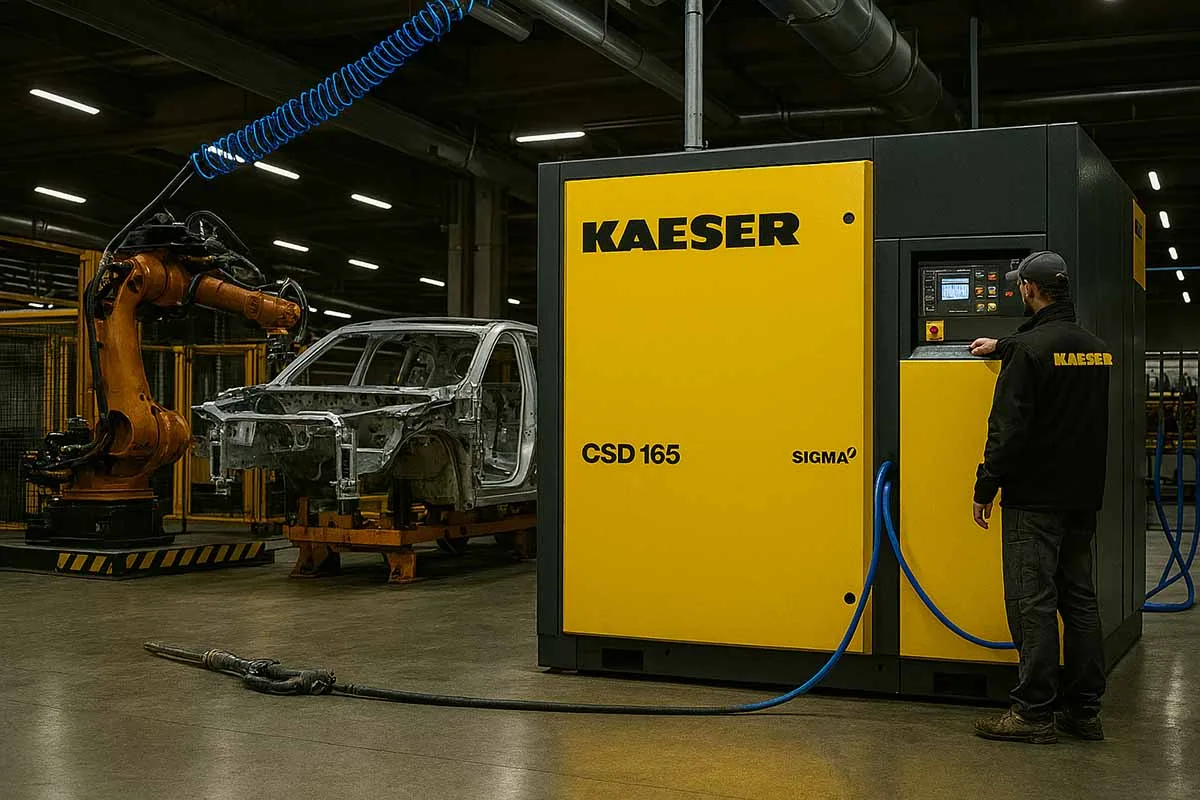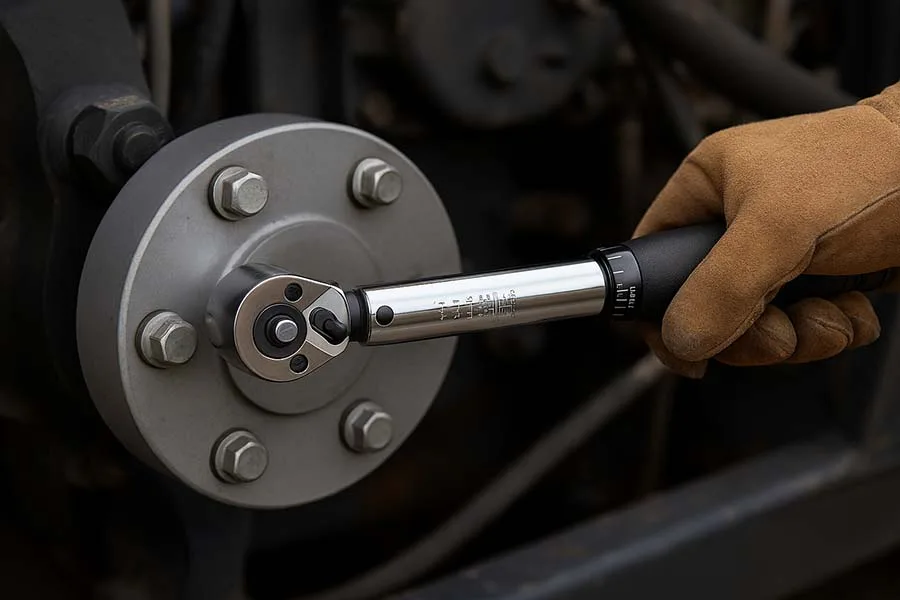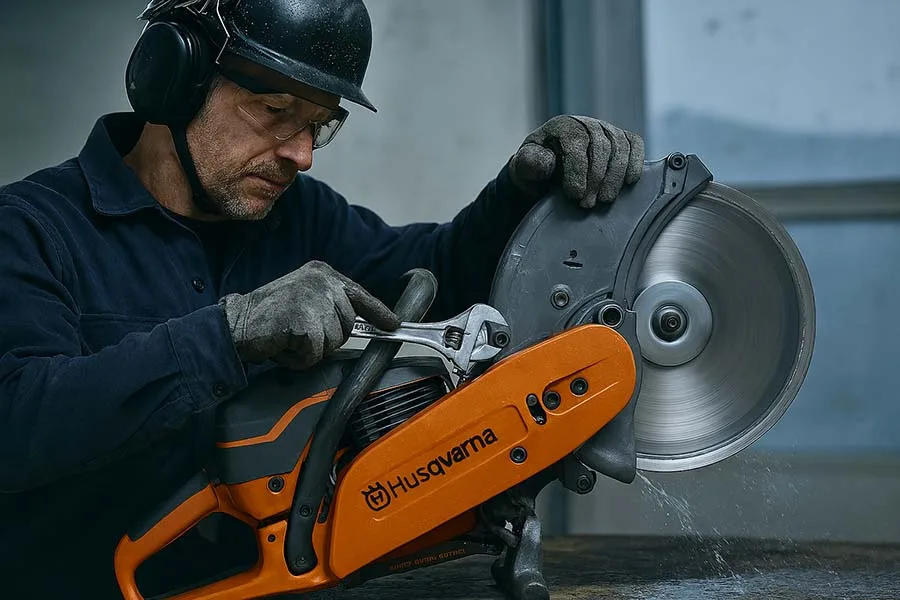Why Maintenance Matters
Your Kaeser compressor isn’t just a machine—it’s the heartbeat of your operation. Whether it powers pneumatic tools, robotic arms, or packaging lines, its performance directly affects uptime, product quality, and energy costs. Regular maintenance isn’t optional—it’s strategic.
A well-maintained Kaeser unit can last 15–20 years or more, while neglected systems often fail within 5–7 years. Clean filters, proper oil levels, and timely inspections prevent breakdowns, reduce electricity usage, and protect your investment.
Key Factors to Consider Before Starting Maintenance
- Compressor Type: SM, CSD, M Series—each has unique service intervals and access points.
- Duty Cycle: Continuous-use compressors require more frequent checks.
- Environment: Dusty, humid, or outdoor settings accelerate wear.
- Control System: SIGMA CONTROL 2 provides alerts and diagnostics—use it.
- Lubricant Type: Synthetic lubricants extend service life and reduce residue.
- Filter Access: Know where your air, oil, and separator filters are located.
Features & Components You’ll Maintain
- Airend (Rotor Assembly): Check for bearing wear, seal leakage, and inlet valve condition. Rebuild recommended every 50,000–100,000 hours.
- Engine (M Series): Inspect fan belts, fuel injectors, and valve clearance. Change lubricant every 500 hours.
- Lubricants: Sample regularly, change every 1,000 hours. Use manufacturer-approved grades.
- Filters:
- Air filter: Change every 500 hours
- Lubricant filter: Every 1,000 hours
- Separator cartridge: Every 1,000 hours or 2 years
- Coolers: Clean regularly to prevent overheating and fluid contamination.
- Condensate Drains: Open weekly to prevent corrosion and bacterial growth.
Common Mistakes to Avoid
- Skipping Drainage: Condensate buildup leads to rust and tool damage.
- Using Non-OEM Parts: Reduces efficiency and voids warranties.
- Ignoring SIGMA CONTROL Alerts: These are early warnings—don’t dismiss them.
- Overfilling Lubricant: Causes foaming and poor separation.
- Delaying Filter Changes: Leads to pressure drops and contamination.
Maintenance Schedule Overview
| Interval | Task Highlights |
|---|---|
| Daily | Visual inspection, check pressure, listen for noise |
| Weekly | Drain condensate, inspect filters, check oil level |
| Monthly | Clean coolers, inspect belts, verify SIGMA logs |
| Quarterly | Replace air filter, inspect separator cartridge |
| Yearly | Full service: oil change, filter replacement, rebuild checks |
Kaeser Compressor Maintenance Guide FAQ
Interesting Fact
Kaeser compressors can recover up to 96% of their heat output—usable for facility heating or water preheating.
Lesser-Known Fact
Kaeser’s metal-free filter elements simplify disposal and reduce environmental impact.
Further Read
- Kaeser CSD Series Review: High-Efficiency Rotary Screw Compressors
- Kaeser M Series Review: Portable Rotary Screw Compressors for Mobile Power and Precision
- Kaeser Kompressoren SM Series Review
- Kaeser Compressor Buying Guide: How to Choose the Right Rotary Screw System for Your Operation
- How to Troubleshoot Common Compressor Problems
- How to Improve Energy Efficiency of Your Compressor
- Portable vs Stationary Compressor: Which One Should You Buy?
- Top 10 Mistakes When Buying a Compressor (and How to Avoid Them)
Conclusion: Protect Your Investment, Power Your Workflow
Maintenance isn’t a chore—it’s a strategy. By following Kaeser’s service intervals and using smart diagnostics, you’ll extend your compressor’s life, reduce energy costs, and keep your operation running smoothly.
Got maintenance tips or stories? Share them in the comments. 📢 Found this guide helpful? Share it with your team or on LinkedIn to help others protect their tools.





